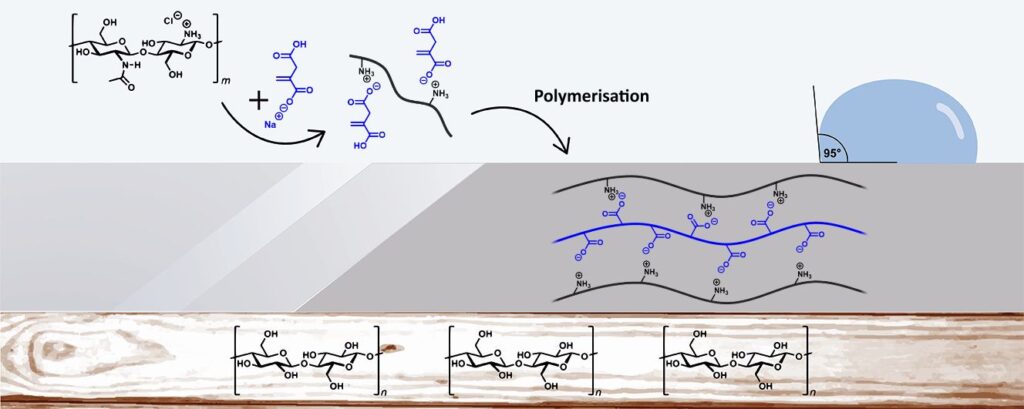
Wood has been a central building material for mankind for thousands of years and is characterised by its bioavailability, sustainability and versatility. Nevertheless, the chemical structure of wood poses a number of challenges. It is susceptible to biological degradation processes, for example by fungi, bacteria or insects, and shows signs of graying due to lignin degradation when exposed to UV radiation. To prevent this, N. Münstermann and O. Weichold have developed an environmentally friendly coating based on chitosan, a biopolymer obtained from food waste.
The newly developed chitosanitaconate coating is transparent, emphasizes the wood grain and gives the wood hydrophobic properties with contact angles of over 90°. It effectively protects the wood from moisture, prevents graying caused by UV radiation and reduces staining caused by coffee or red wine, for example. Thanks to its strong adhesion and adaptability, the coating is highly versatile. By adding pigments, the coating can be adapted to the aesthetic requirements of modern interior design. Chitosanitaconate combines wood protection, modern aesthetics and sustainability – a versatile solution for environmentally friendly construction.
N. Münstermann, O. Weichold
Chitosan itaconate based water- and stain-repellent coatings for wood
Progress in Organic Coatings 2024, 194, 108630 https://doi.org/10.1016/j.porgcoat.2024.108630




Leave a Reply